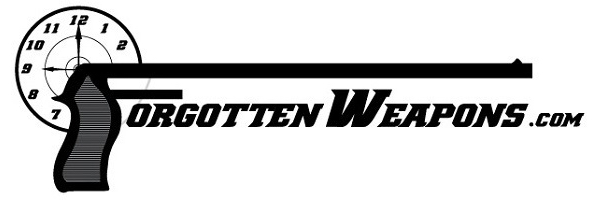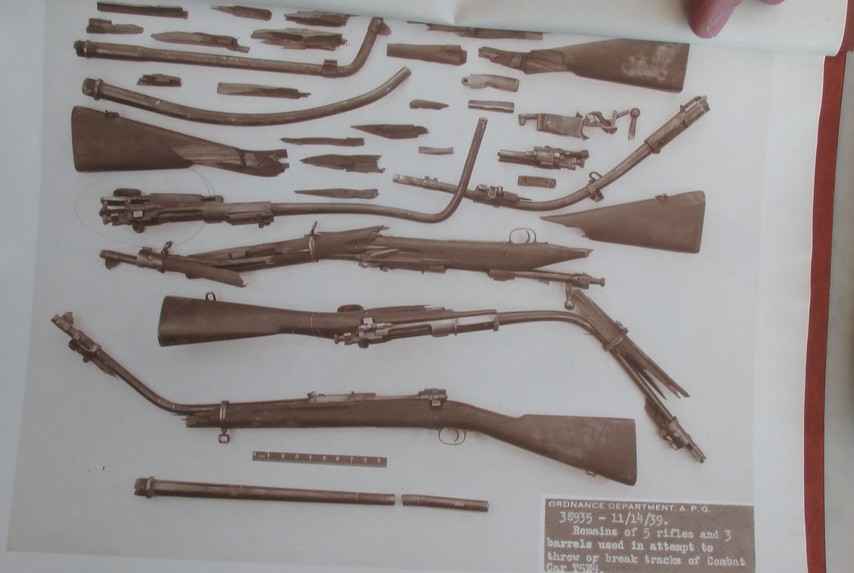The Handy Gun was introduced by Harrington & Richardson in 1924. H&R took their Model 1915 single-barrel break-action shotgun and cut it down into a handgun. It got a pistol grip and an 8” barrel, and was offered in both .410 and 28 gauge (the .410 model also able to fire some .44-caliber single-bullet cartridges). A 12” version was also made, to be legal in a few states that had length restrictions. It was advertised specifically for personal protection, probably exploiting the common belief that one need not aim a shotgun at close range.
In 1931 H&R attempted to pivot the Handy Gun into the target pistol space, introducing .22LR and .32 S&W models with rifled barrels. These didn’t sell very well, as there were many other, better options for target pistols. A detachable wire stock was introduced in 1933, but this didn’t help much either.
Ultimately the National Firearms Act of 1934 conclusively killed off the Handy Gun (along with similar products from other companies, like Ithaca’s “Auto & Burglar”). That law categorized smoothbore pistols as “Any Other Weapons”, and subjected them to NFA registration with a $200 tax on their manufacture and a $5 tax on their transfer. This overhead destroyed demand for the gun, and the company simply ceased to offer it commercially. It did continue to be sold in Canada until World War Two however as Canadian law did not restrict it at that time. Total production was about 54,000.




always wondered if these were also intended in similar uses as pocket rifles, trail guns, bicycle guns or marbles game getter. A gun that was portable and handy enough to be useful for opportunistic pot shooting of pests or game.
Every Handy-Gun ad I have seen is pitched towards farm and country life, all of them suggesting this item was suitable for the eradication of snakes and varmints, and spontaneous hunting of small game. Not unlike the .22 leaning beside the back door, but you could carry it around. Holsters were offered for it. I would like to know more about pricing: Cheaper than a full-size shotgun? More expensive than a derringer?
In 1933 a H&R handi sold for 12-15$, depending on the finish.
12$ would get you a cheap revolver, such as an Iver Johnson. A Colt / S&W revolver started around 30 USD at that time.
“(…)know more about pricing(…)”
According to Sears Roebuck And Co Catalog 1922 https://archive.org/details/SearsRoebuckAndCoCatalog1922_201812 at page 784
Harrington & Richardson 410-Caliber Gun costs $9.40
H&R 1871 (and later under the name New England Firearms) made the rifle-length versions, the Handi-Rifle for a long time, and for a long time you could order additional barrels in many different calibers (from pistol to rifle to shotgun, all center-fire so they all work with the same receiver) from them by sending in the receiver and they would grind the rear of a barrel to match and send them back to you. In the lat 20th century (later 1990s) the cost of an additional barrel was less than $100. The company went through a few owners ending up as part of Remington and that is still tied yup in Remington’s bankruptcy: https://en.wikipedia.org/wiki/Harrington_%26_Richardson
This could be made even more fearsome with the addition of one of those Alofs-systeme type kluge rube goldberg external tube magazines that pop a new shell over the just-opened breech…
Question for all of the assembled gun cognoscenti: What would be the larger shot, possibly approaching buck-shot, for a 28-ga.? I mean, the nominal bore diameter is like .54 cal., so a single “pumpkin ball” could be done, but would something like “T shot” or BBB?
Anyone who is interested in owning such a break open .410 pistol might look at the Rossi “Brawler” that is in production.
But it has a rifled .45 long Colt barrel, so as not to violate the “short-barreled shotgun” and/or “AOW” status of the 1934 NFA… With the resultant caveat that the shot from a .410 shell won’t perform as well as from a smooth-bore barrel.
A worse loss due to the same legislation was Marbles “Gamegetter”, 22 LR over a 44-40 smooth-bore
As someone who grew up with a .410 shotgun (Winchester Model 37), I’m of the opinion that a .410 is about as near to useless as a shotgun can get. Even with a “full-length” (28-inch) barrel.
Even more than the 20 gauge, it has to be aimed very precisely, like a rifle, to get its very small and narrow shot column on target. With slug loads, it’s very like shooting a 5-inch .44 Special revolver with 246-grain factory ammunition, except generally considerably less accurate even out of a 28-inch full-choke barrel. (Yes, you can shoot slug loads through a full-choke, even though it is not generally recommended.)
In terms of velocity, the muzzle velocity out of a 28 inch full-choke barrel with slug loads averages 1800 F/S with an energy of 640 FPE. Out of the abbreviated barrel of one of these “pistols”, it’s more like 750 and 310 respectively. IOW, you’re shooting a .44 S&W Russian black-powder load. And yes, when the unburned powder ignites at the muzzle on contact with the outside air, the visual signature is impressive- but that’s wasted energy, not delivered power.
As for shot charges, there’s no point in using anything larger than no.7 in a .410. No. 6 is the standard, but I found it largely ineffective on pests (grackles) beyond 10-12 yards; it hit, but not with enough pellets to get the job done. No. 7 throws a slightly denser pattern and is effective out to 15-18 yards. No .410 shot load is worth bothering with at 20 yards or more; get a damned 20-gauge loaded with No.6.
I would submit, based on experience, that a .45 Colt or .44 Magnum revolver loaded with mixed lead bullet medium velocity ammunition (“Cowboy loads” as they are known today) and no.7 shot loads in plastic shot capsules would be far more practical and effective than one of these FREDs.
About the only one of the breed I really wish was still around is the Ithaca Auto & Burglar double-barrel in 20-gauge. Loaded with No.4 buck it got its point across in no uncertain terms out to ten yards.
Very handy on stake-outs. Not least because it wasn’t instantly ID’d as a “cop gun”.
clear ether
eon
I am kind of curious if a rifled choke of the Paradox or Explora type would qualify a 410 as a pistol and therefore beat the AOW designation under US law, since they’re known to be far better for shot patterns than a fully rifled barrel